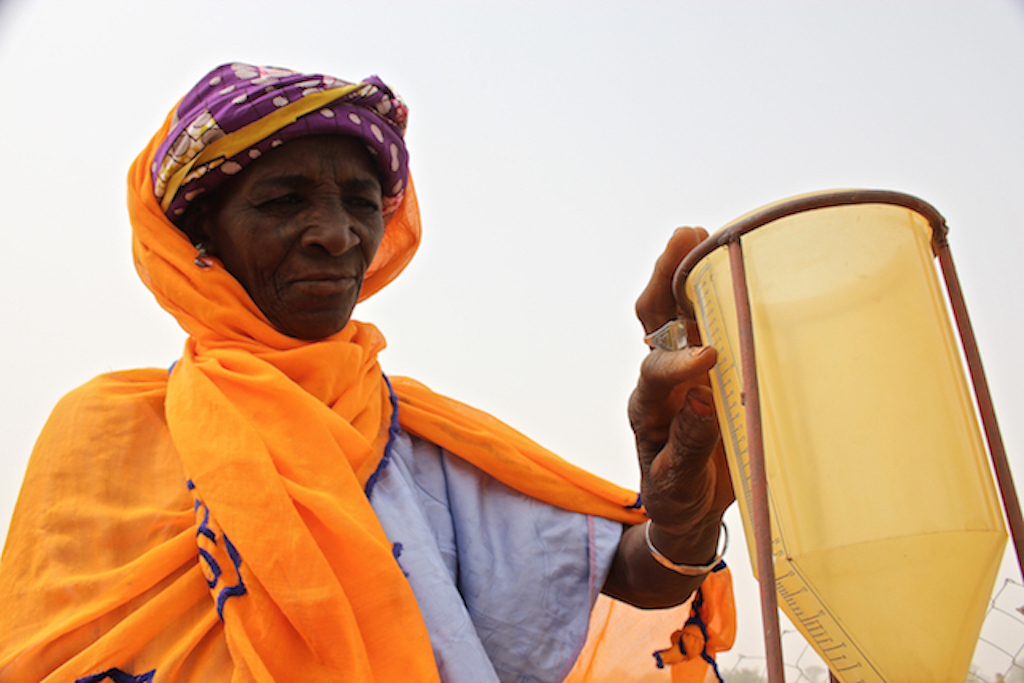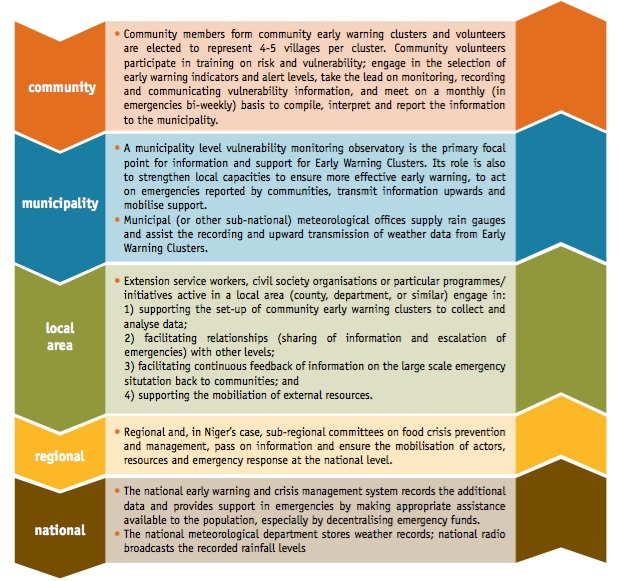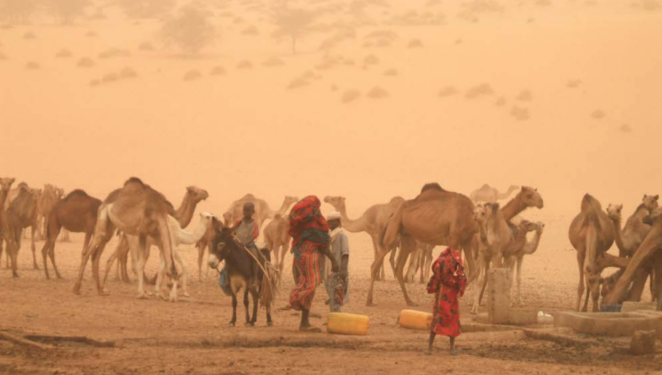Integrating disaster risk reduction and adaptation to climate change: ALP practitioner brief 2

Introduction
This brief* describes a climate-integrated Community-based Early Warning System implemented by the Adaptation Learning Programme (ALP) in Dakoro, Niger. Integration of Community-based adaptation and disaster risk reduction (DRR) is important in a context of chronic vulnerability, recurring emergencies and increasingly unpredictable and extreme weather events associated with climate change. The brief provides a rationale for the early warning approach, including an overview of the associated benefits and challenges, as well as the key practical elements and lessons learned through implementation.
The purpose of this Practitioner Brief is not to provide a blueprint for integrating community-based adaptation and disaster risk reduction, but to invite expansion and modification – based on lessons learned by ALP about its strengths and gaps, as well as different experiences and innovations in other contexts. It also aims to provide organisations implementing community-based early warning and action or community based adaptation in Niger and elsewhere in Africa with greater clarity and practical insights for integrating a climate perspective. It is designed for CBA practitioners, including local government representatives, civil society organisations (CSOs) and other actors working on climate change and DRR issues at the local level. It will also be useful for policy makers and donors engaged in planning and allocation of resources for adaptation action.
*Download the full brief from the right-hand column. See below for an overview of the method and the lessons learnt. This publication is also available to download in French – please see the Further Resources section.
Methods and Tools
A community-based early warning system that forms part of community-based adpatation contributes to adaptive decision making at the individual/household, community and local government level. Overall, the main aim is to strengthen capacities at all levels to predict and manage emergencies – in particular food crises – and support adaptive capacity building to deal with the uncertainties and risks of changing, unpredicatable climate.
As such, the community-based early warning system helps to:
- Organise the generation of and access to information for and by the community themselves, by
- raising awareness of the need for such a system,
- identifying indicators, alert levels, and types of responses, and
- collecting and analyzing information on a regular basis.
-
Define a series of actions to be taken depending on the alert level of the emergency, by using the information to identify responses that reduce the impacts of a hazard or a series of hazards.
-
Identify, establish and develop institutional alliances and relationships at all possible levels from the community to the subnational, national and even global level.
-
Develop appropriate capacities, within and beyond the community, to put into practice the best possible responses.
-
Create and maintain a relationship of trust between the formal and community systems through exchange of information.

Lessons Learnt
Recommendations for improvement and going to scale:
- Ensure effective feedback loops – faciliating the flow of information both upwards and downwards through the system.
- Reduce the burden on volunteers
- Build on existing community structures
- Ensure equitable benefits for adaptation strategies
- Challenge gender roles
- Ensure representation of Emergency Early Warning Clusters at higher levels
- Make use of the evolving record of weather data to help improve localised forecasts and support innovation in climate science.
- Accelerate communication in case of emergencies.
- Decentralisation of emergency stocks.
- Ensure government ownership
- Understand that ‘community based’ is not ‘community-limited’

This publication was authored by Agnes Otzelberger in collaboration with Fiona Percy, Nicola Ward and Maurine Ambani.
It is based on documentation of approaches by and with the ALP Niger team and on the generous contribution of time and inputs by representatives of the villages of Aman Bader, Dan Maza Idi, Na Allah, and Marafa in Dakoro in southern Niger. Particular thanks to Sanoussi Ababale of ALP Niger for his guidance and support during the journey to document this work in April 2015. The document has also benefitted from contributions from Hama Harouna in ALP Niger, the Mayor of Bader Goula municipality in Dakoro, representatives of Oxfam in Niamey and of AREN (Association pour la rédynamisation de l’élévage au Niger) in the regional capital of Maradi. The author and ALP would also like to thank the ALP Niger team and CARE Niger programme staff for their support, and all of the dedicated and inspiring project staff and partners involved in the approaches outlined in this brief, as well as the authors of the various publications referenced.
Suggested Citation:
ALP (2015) Integrating disaster risk reduction and adaptation to climate change. CARE Interational: London, United Kingdon.
Sourced from: http://careclimatechange.org/wp-content/uploads/2016/02/CBA-and-DRR-Brief.pdf
Related resources
- Read "Adaptation Planning with Communities: Practitioner Brief 1"
- Learn more about the Adaptation Learning Programme
- Read the ALP Adaptation Strategies Compendium
- Read about CARE's work using Participatory Scenario Planning (PSP) in Kenya
- Read more about the Adaptation Learning Programme on CARE's website
(0) Comments
There is no content